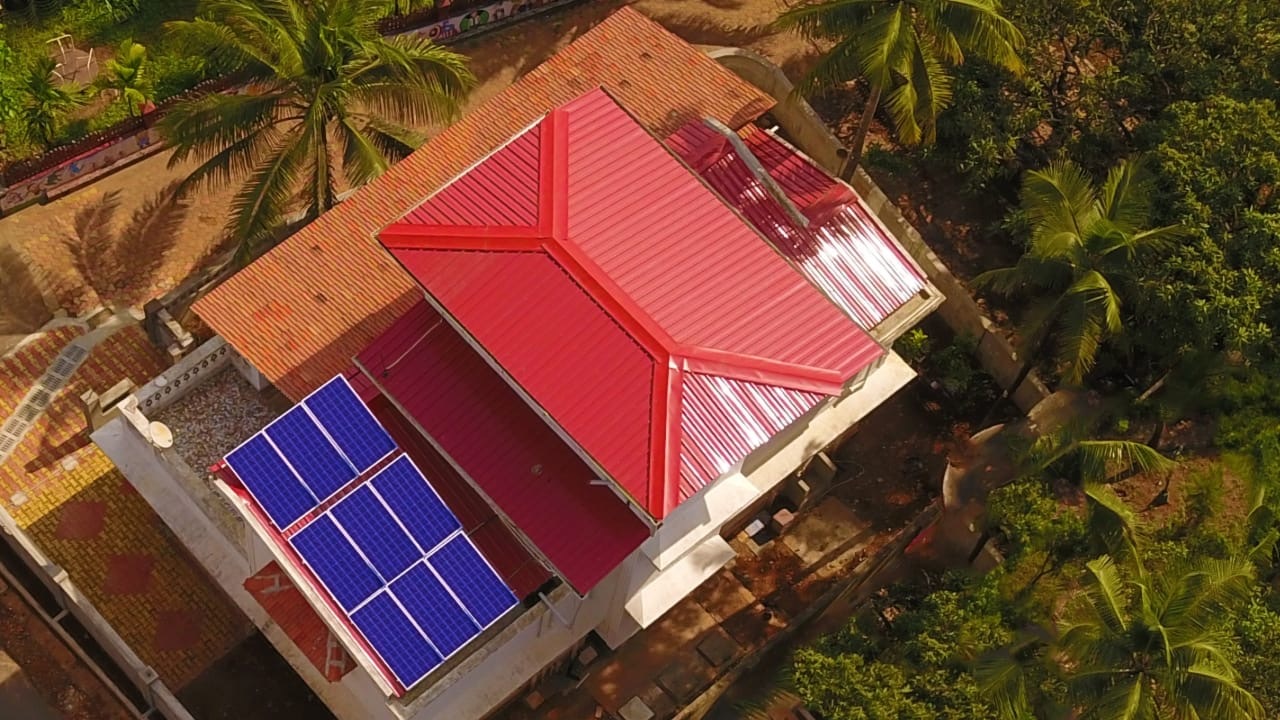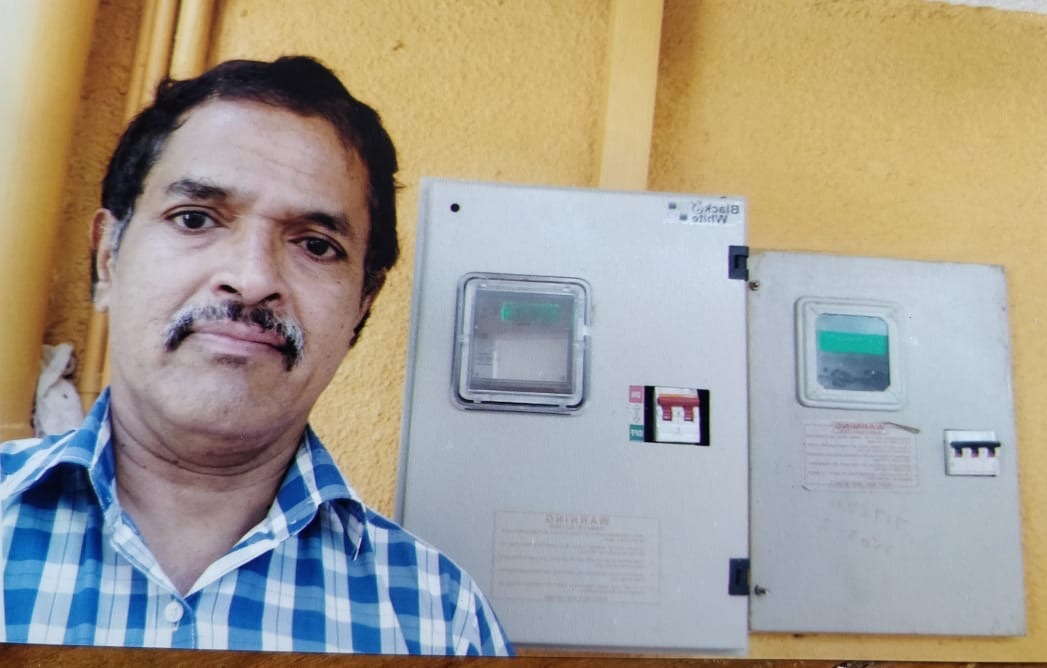‘I Pay Zero Rupees for My Electricity’: Goa-Based Professor Shows How
A resident of Merces in Goa, Madhusudhan Joshi doesn't pay a single rupee for his electricity bills, thanks to a sustainable home that's powered by solar energy.

Earlier this year, when cyclone Tauktae hit the West coast, many homes in Madhusudhan Joshi’s locality in Goa faced a power outage for three days. However, his home had enough electricity to power essential appliances as well as charge the mobile phones of a few neighbours.
This was only possible thanks to the hybrid solar energy system he uses to power his home.
In 2018, when the 58-year-old was constructing his home, he decided to make it an eco-friendly one. To do so, the Goa resident visited several home exhibitions.
“Being a professor at the Goa College of Pharmacy, for the last 25 years, I have been teaching a subject on renewable energy. However, I had not put any of the practices I taught to use before. But when I was constructing my home, I decided to power it with solar energy,” says Madhusudan in an interview with The Better India.

Today, his home in Merces, Panaji, and all the appliances within it are fully powered by solar energy. Since the energy system is a hybrid model, he not only saves money on electricity bills but also gives back energy to the government and earns Rs 350 annually.
Zero bills and earnings from surplus
When Madhusudhan decided to construct an eco-friendly building, he began visiting home exhibitions conducted around the city. At one of those, he came across a company named Solar360 located in Vasco, Goa.
“While most solar providers offer on-grid and off-grid systems, this company was installing hybrid systems. This means, the solar energy is stored in a battery as well as connected to the grid and gives back energy to the local electricity provider,” says Madhusudhan.
To explain in simple terms, when using a hybrid system, the energy generated from the sun is stored in a battery first. If there is surplus energy, it is exported to the grid and the government will offer compensation based on the number of units generated. This system costs Rs 5,80,000, which is more than the conventional solar panel installation.
In January 2019, Madhusudhan and his wife moved into their newly constructed home. The house had solar panels that could generate 11 kW of power, installed on their roof. The energy generated was connected to four 15-Volt batteries, which further supplied energy to their home through an inverter.

“We use solar energy to power all kitchen appliances, including the refrigerator. Other heavy appliances like washing machines and television are also powered by solar energy,” says Madhusudhan.
However, during monsoons, Goa experiences heavy rainfall and there is inadequate sunlight for several days. At that time, the power supply system automatically switches to the grid, where electricity is supplied by the government.
“Two weeks ago, there was heavy rainfall, and my solar unit generated only 1 kW of energy for an entire week. But all my appliances were still working because the system automatically draws power from the grid when the battery is empty,” says Madhusudhan.
To check his power supply and usage, he has a Battery Management System installed on his mobile phone.
Throughout 2019, Madhusudhan powered his entire home using solar power and did not generate any electricity bills.
“I paid zero rupees for my electricity. However, at the end of the year, since I had supplied surplus energy to the grid, the government compensated me with Rs 350. This amount is calculated based on the cost of electricity per unit along with surplus units,” says Madhusudhan, adding that he paid up to Rs 800 per month for electricity in his old house.
Madhusudan says that he has no complaints about using the solar energy system. Speaking of how others can learn from his example, he says, “It has made my life hassle-free and I do not have to worry about power cuts, which could affect my daily routines.”
Edited by Yoshita Rao
If you found our stories insightful, informative, or even just enjoyable, we invite you to consider making a voluntary payment to support the work we do at The Better India. Your contribution helps us continue producing quality content that educates, inspires, and drives positive change.
Choose one of the payment options below for your contribution-
By paying for the stories you value, you directly contribute to sustaining our efforts focused on making a difference in the world. Together, let’s ensure that impactful stories continue to be told and shared, enriching lives and communities alike.
Thank you for your support. Here are some frequently asked questions you might find helpful to know why you are contributing?


This story made me
-
97
-
121
-
89
-
167











